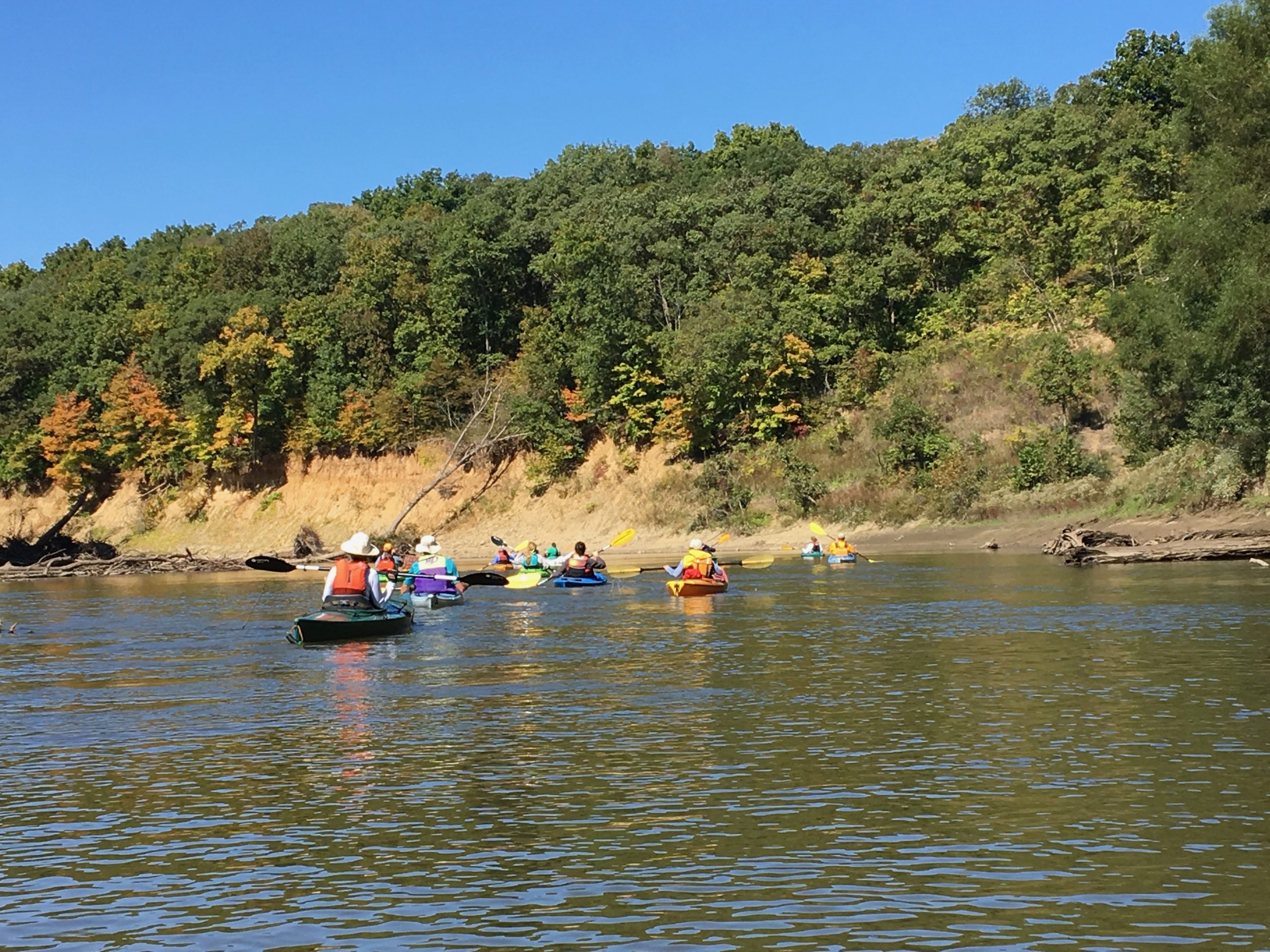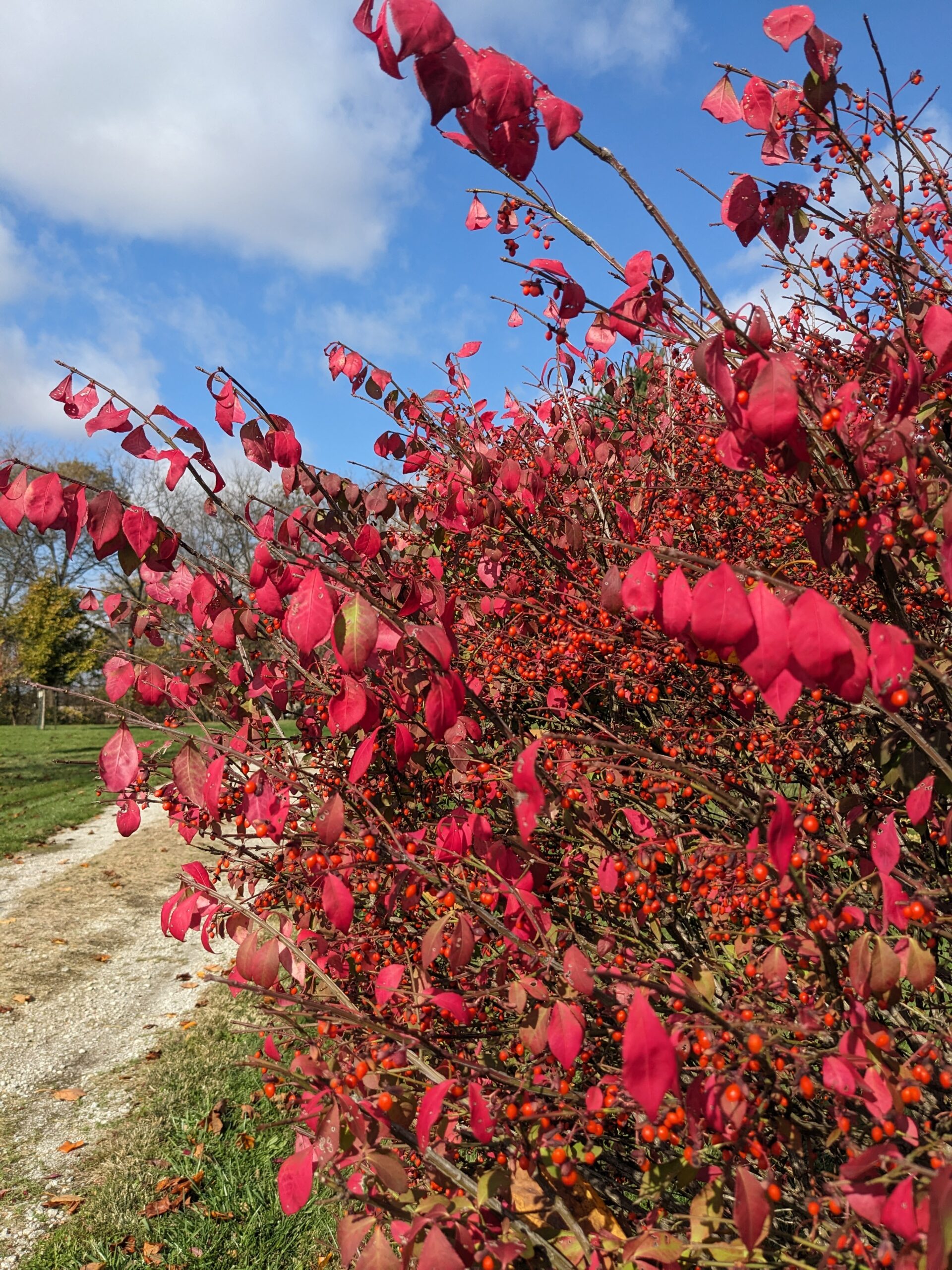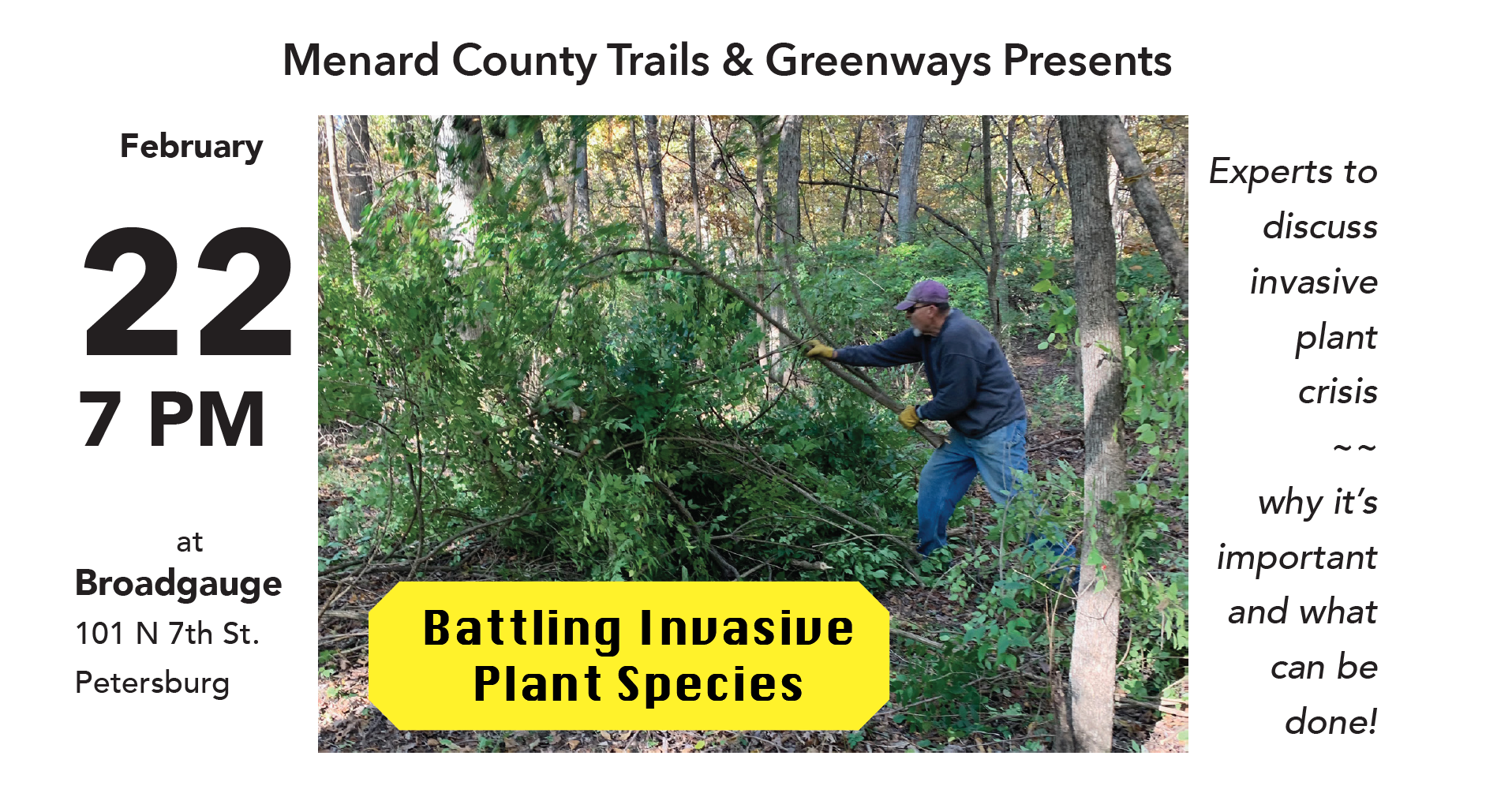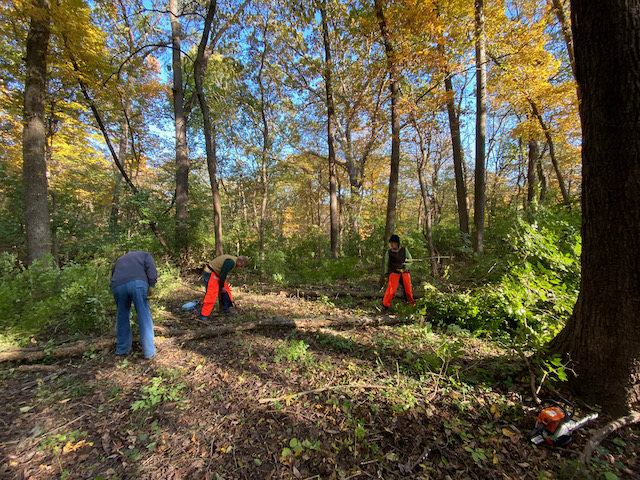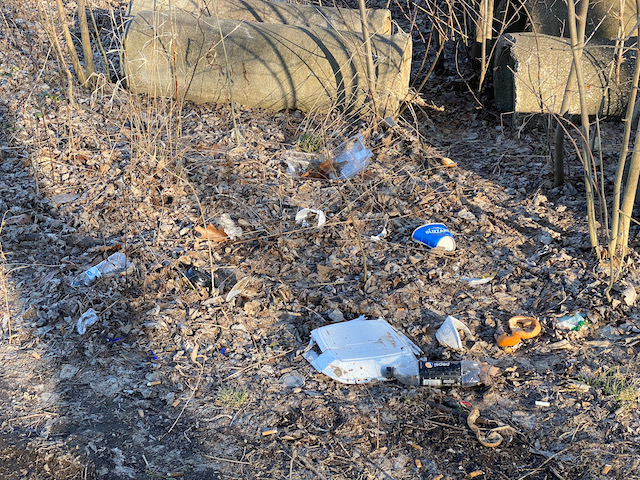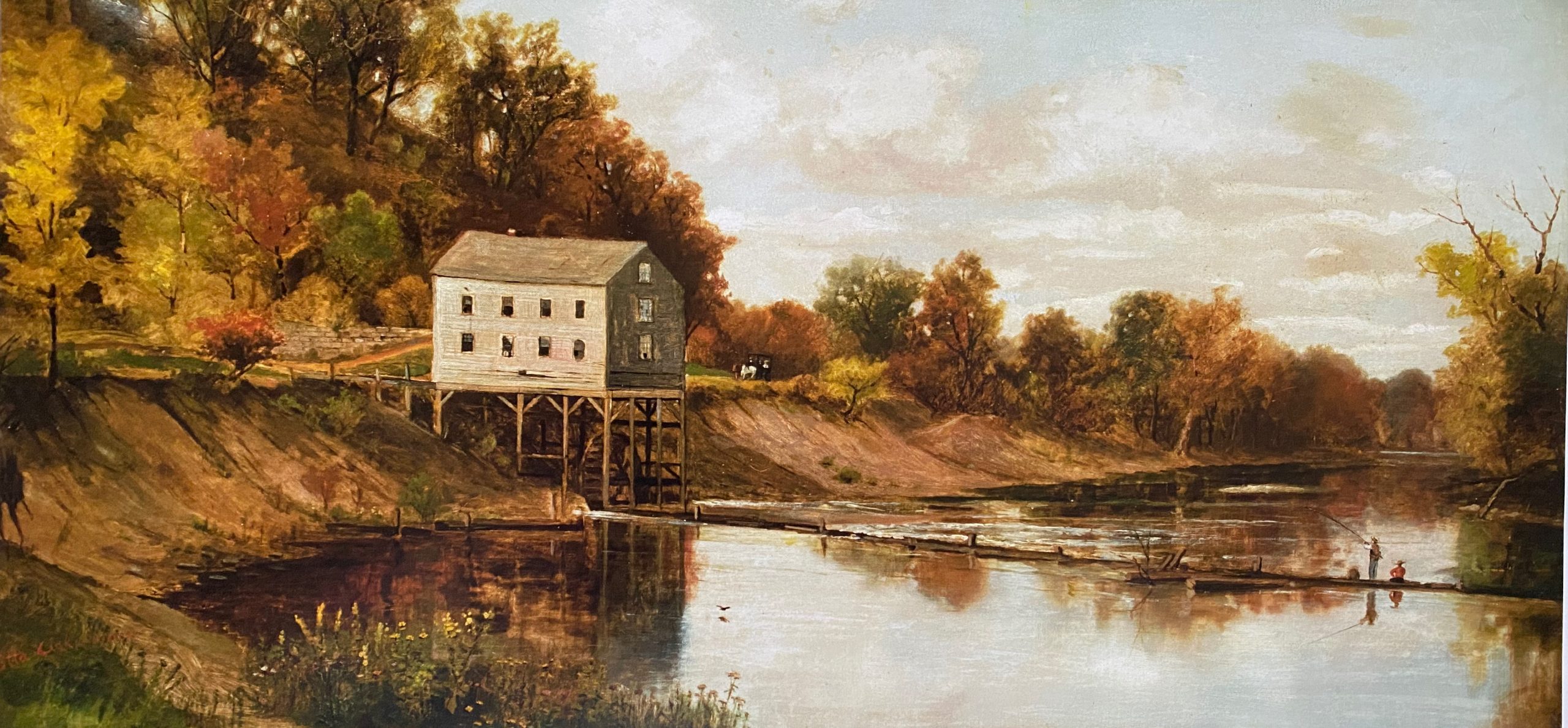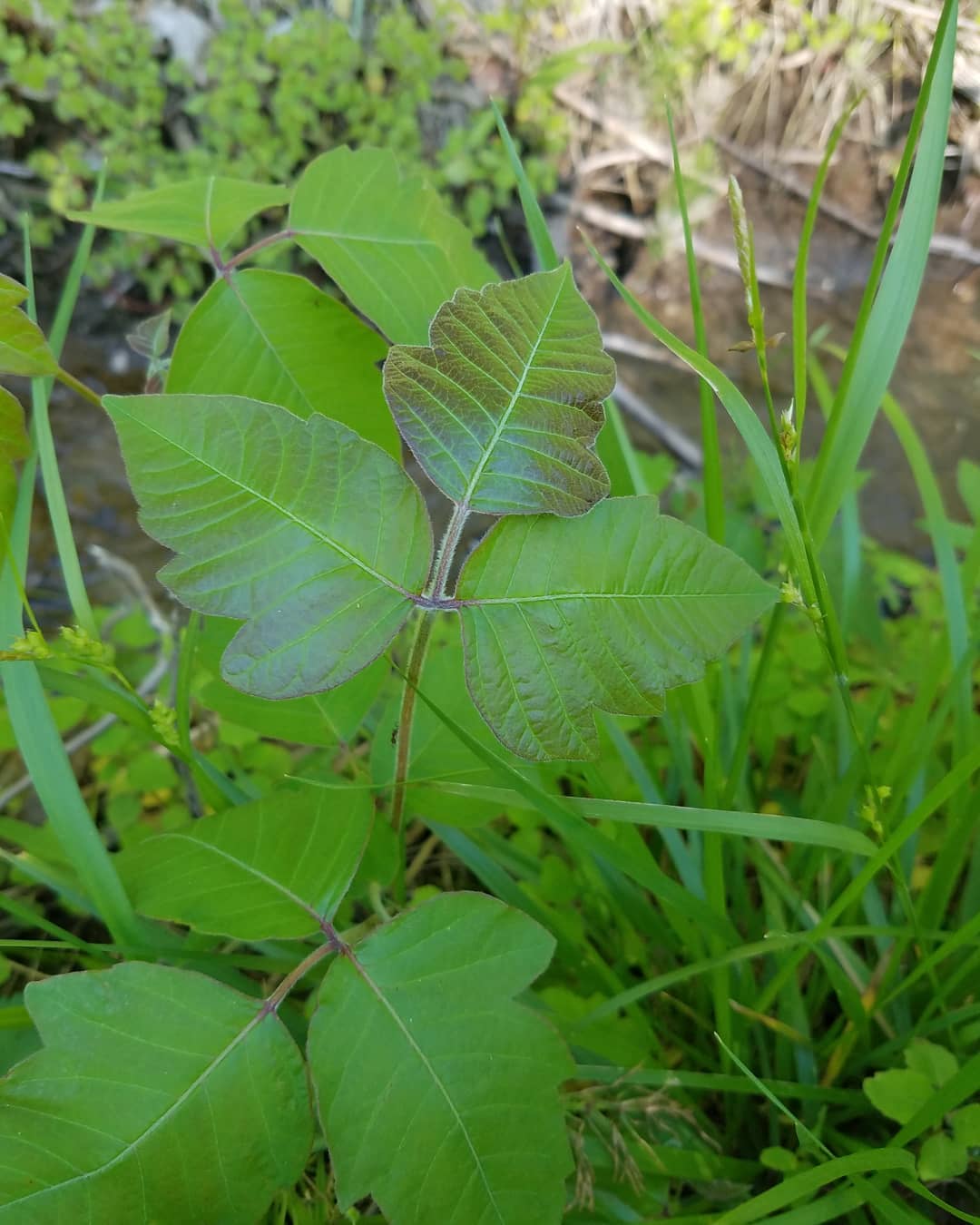-
IDNR Volunteer of the Year Award
On August 17, 2024, Menard County Trails & Greenways received an Illinois Department of Natural Resources Volunteer of the Year award for the work we’ve done at the Lincoln’s New Salem State Historic Site Habitat Restoration Project! Since the spring of 2021 over 50 volunteers have contributed 973 volunteer hours over 128 days cutting & treating extremely dense and often very large honeysuckle bushes; and 195 hours hand pulling 196 garbage bags of garlic mustard. There’s more work to be done!! Let us know if you’d like to join the volunteer crew!
-
Scary Invasive Plants in Your Landscape
Scarier than goblins, witches and ghosts are all the invasive plants we have planted in our yards and gardens! This Halloween we bring you a post about the horrors of invasive plants in your landscape. Some of our Menard County Trails & Greenways members have already been hard at work on the restoration efforts at New Salem in recent weeks. With the arrival of cooler temperatures, we’ll be scheduling volunteer work days soon! Be watching our Facebook page or your email if you’re an MCTG member for those dates. If you’d like to contribute to our forest restoration efforts at New Salem, but you can’t make it to our work…
-
Prescribed Fire — New Salem Habitat Restoration Project
On April 10th the Illinois Department of Natural Resources conducted a prescribed fire on approximately 20 acres within the MCTG New Salem Habitat Restoration project area. Project supervisor, Ray Geroff, was the burn boss, with help from IDNR staff and MCTG project volunteers. Even though we had removed leaves (fuel) from the base of dead and dying trees, because of the low humid that day several large, dead trees caught fire and had to be cut down. Our hats off to the skill and hard work that was required to accomplish that task!
-
Garlic Mustard Pulls at New Salem
Why do we pull garlic mustard? Each garlic mustard plant grows pods called siliques and each plant produces on average 22 siliques, each silique containing as many as 28 seeds. That is over 600 seeds on an average per plant, with some particularly robust plants producing almost 8,000 seeds. That’s why it is so important to remove the plant before it sets seed.
-
New Salem Habitat Restoration Project Featured in Outdoor Illinois Journal
Outdoor Illinois Journal, the Department of Natural Resource’s online magazine, has published a piece about Trails & Greenways’ New Salem Habitat Restoration Project. Check it out here! More Project Information Our Projects & Activities
-
Battling Invasive Plant Species Presentation Video
For those who missed Chris Evans and Ray Geroff at Broadgauge on February 22, or simply want to review all the great information that was shared, here is the video recording of Battling Invasive Plant Species.
-
Battling Invasive Plant Species–Special Presentation
Experts to discuss invasive plant crisis–why it’s important and what can be done! Menard County Trails & Greenways invites the public to an engaging presentation about invasive plants—what they are, why they are a serious problem and what can be done about them—February 22, 2023, at Broadgauge in Petersburg at 7 p.m.
-
Invasive Species at New Salem State Historic Site
It is very exciting to kick off our habitat restoration work at New Salem Historic Site in partnership with the Illinois Department of Natural Resources! While the site is best known and visited for the recreated village where Lincoln once lived, much of the site is forested land, from the floodplains along the Sangamon River to the upland forests crisscrossed by several miles of hiking trails. Like most natural areas, regular management is necessary to deal with invasive species that have displaced so much of our native flora.
